
Welcoming a new member to your family should be cause for celebration, but for some it may just generate angst when they look at what’s already in their driveway.
Is that ancient sedan going to cut it as a family car? Is a two-door sports car going to be a pain to live with when the baby comes along?
Allow us to help. Our first advice is this: Get the newest car you can afford. Newer cars will have a higher degree of standard safety equipment and better crash performance that older models, and when it comes to carting around a young family it’s safety that should be the primary consideration.
But beyond that, what do we recommend? Not everyone has the budget to put a hulking SUV in their garage, but the good news is that there are a number of good baby-friendly cars across a very broad range of prices.

There are some common attributes new parents will need to look for.
For one, it needs to be easy to get children in and out of the second row.
All of these cars have either heaps of room between the front and rear seats to help mum or dad strap junior in, a wide-opening rear door, or – in most cases – both.
A sizeable boot area is also a must.
Given the need to house a pram and bags of baby gear like toys, food, nappies and more, you’ll want to make sure there’s loads of room in the boot.
So, which cars in today’s market are the best picks for babies?
While this list is by no means exhaustive – there are no doubt many other vehicles that aren’t mentioned here that also have good credentials as baby haulers – these are the new vehicles we recognise as being among the best in their segment when it comes to toting a young family.
Wait!
Before you skip down to our list of suitable cars, you can also see our Best Medium SUV and Best Dual-Cab Ute stories, each of which have comprehensive family-friendliness sections.
Now, on with the list…
Small cars: Subaru Impreza, Honda Civic, Kia Cerato
The small car class is no longer one of the most popular vehicle categories in this country, however there are still a couple of models that continue to do well month-in-month-out.

There are a few that rate better in the baby stakes, however, all by virtue of having roomy back seat areas that allow two (or even three) baby seats to be strapped in while still leaving enough room for a parent to lean in comfortably.
The Subaru Impreza is a standout, whether in sedan or hatch form, as are the Honda Civic and Kia Cerato. The Impreza gets a few more points for having the extra grip of all-wheel drive as standard on every model, an important safety consideration.

Medium/large: Toyota Camry, Skoda Superb
New car buyers are abandoning the medium and large sedan categories in droves, but savvy shoppers should recognise that there are still some appealing and value-rich vehicles in those segments.
Cars like the Toyota Camry provide plenty of metal for your money, with the $36,729 Camry Ascent base model offering those baby-friendly virtues of a big back seat area and sizeable boot (you get 524 litres of cargo capacity in most Camrys, except in the base model which gets ‘only’ 493L).
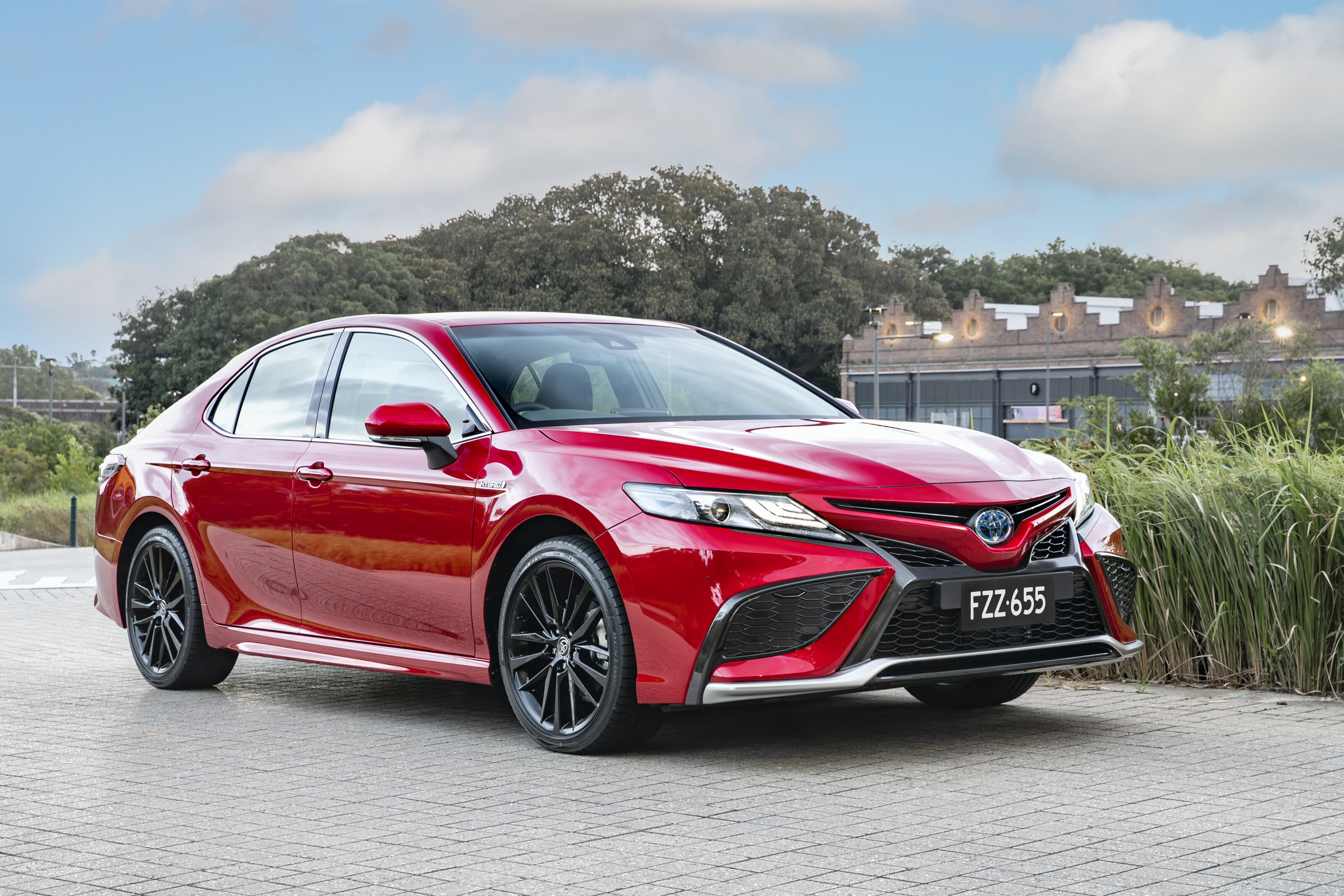
While the Skoda Superb is supremely roomy in the back seat, has a huge boot, and comes with a dignified European design that looks more expensive than its actual retail sticker.
You’ll need $56,990 to get into one, but the Superb is one for those looking for a premium car on a mainstream budget.
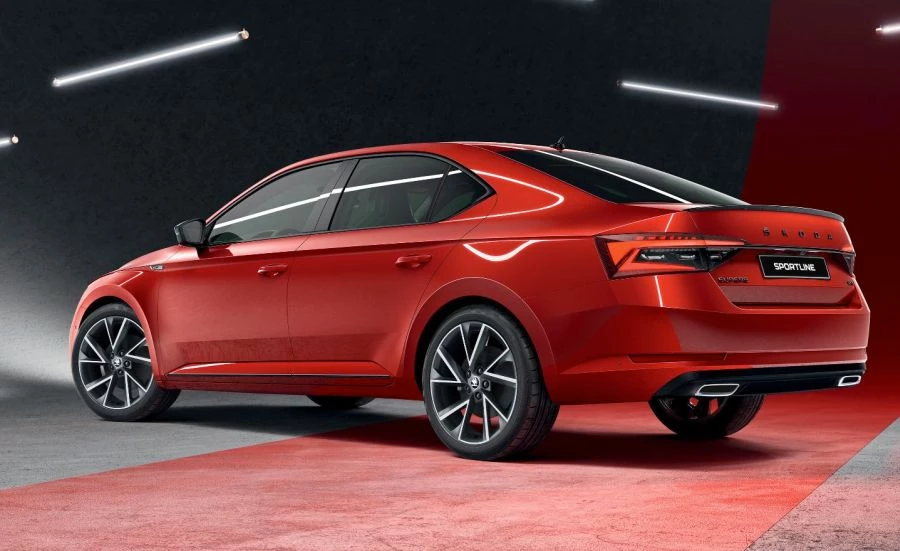
Small SUV: Honda HR-V, Subaru XV, Suzuki Vitara
And now we’re into SUV territory, the category that is now well and truly the family-car heartland.
Not everything you find at the bottom end of the SUV spectrum is suited to baby duty. Some, like the Mazda CX-3, are very much the opposite thanks to cramped rear seats and tiny boots. Some might think a jacked-up ride height is all you need to make a good family car, but they’d be wrong.
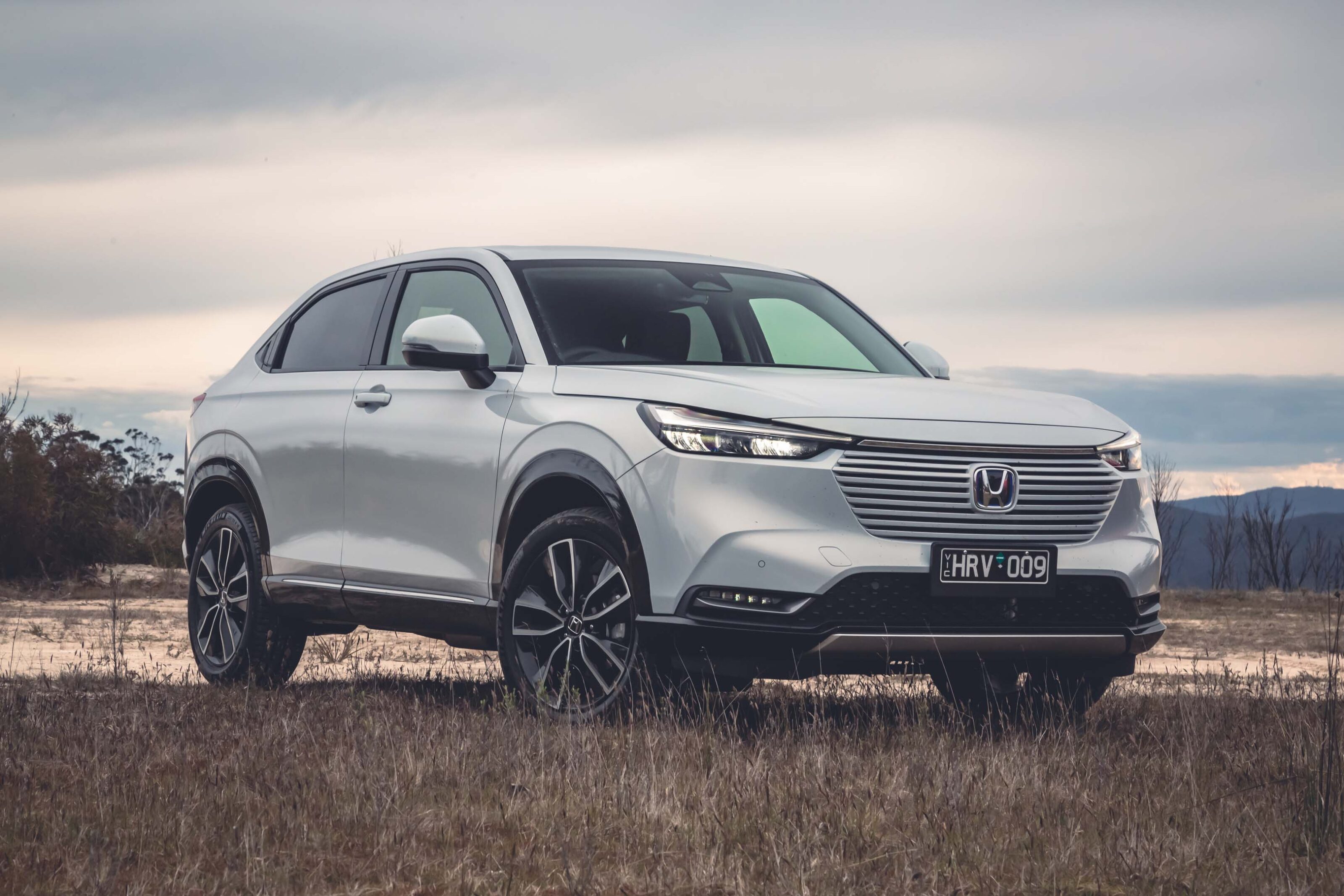
There are still some good choices though, with the comparatively spacious Honda HR-V and Subaru XV (soon to be replaced by the Crosstrek) being standouts. The XV is no surprise, given it’s based on the Impreza hatch and shares virtually all of its interior and generous cabin proportions with that car – with the added bonus of a tall ride height to make it that little bit easier to belt in the kids.
The Suzuki Vitara is another notable small SUV, with its big boxy body being what most would consider to be a traditional SUV bodystyle, and being commendably practical as a result.
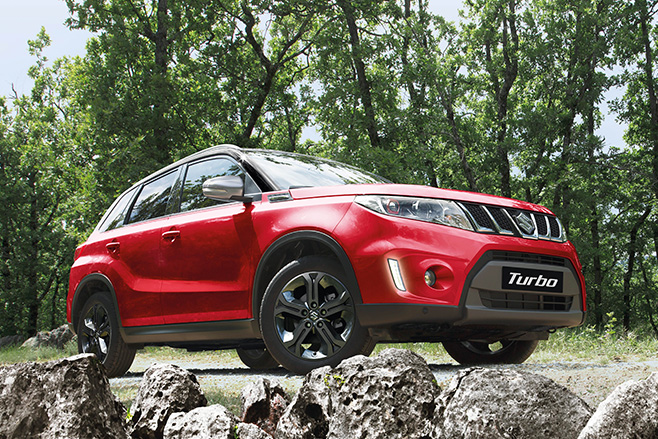
Medium SUV: Subaru Forester, Mitsubishi Outlander, Nissan X-Trail, Kia Sportage
This is arguably the sweet spot for growing families, with cars that are still a manageable size – yet big enough to comfortably take the parents and a few baby seats.
Gangly teenagers are a different story, but you’ve got at least a decade to prepare yourself for that.
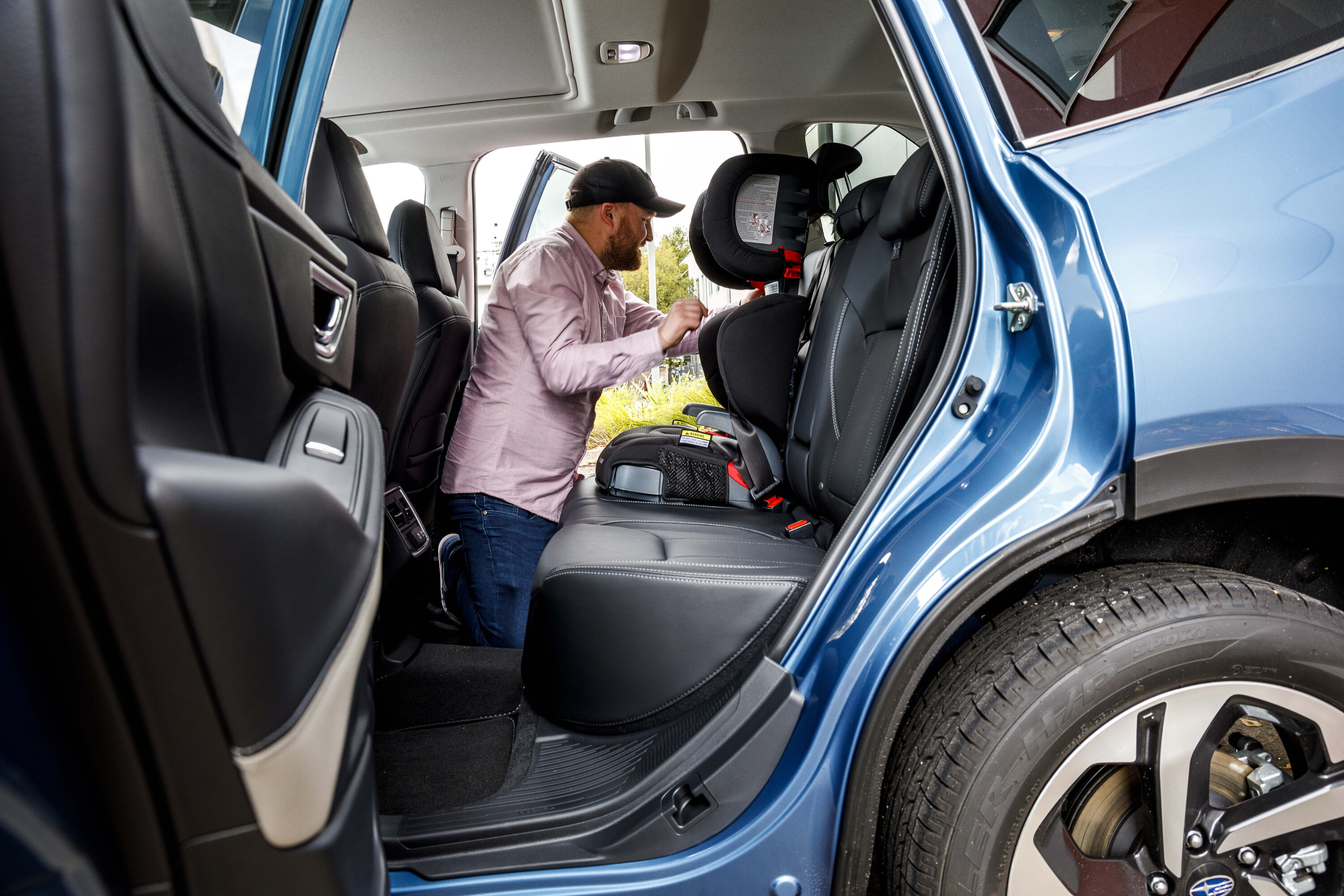
Within the segment, the standouts are the Kia Sportage and Subaru Forester, both for their excellent rear-seat room and versatile luggage spaces with wide-opening tailgates.
The Mitsubishi Outlander deserves mention for its optional third-row of seats too, and so does the Nissan X-Trail and CR-V – that extra passenger-carrying versatility can be invaluable.
Large SUV: Skoda Kodiaq, Mazda CX-9, Ford Everest, Volkswagen Passat Alltrack, Subaru Outback
If all you need is a family wagon and don’t necessarily require rock-hopping off-road capability, there’s plenty of road-biased options within the large SUV segment to keep you happy.
The Skoda Kodiaq exists at the smaller end of the large SUV spectrum but has plenty of intelligent interior features that maximise is cabin utility, not to mention a three-row layout that allows plenty of child seats to be strapped in, a huge 603-litre boot capacity (third row down) and built-in retractable sunshades in its rear doors.

Mazda’s CX-9 is one of the most popular large SUVs around, and with a high-quality interior, car-like handling and heaps of space for seven people it’s not hard to see why. It’s a solid family choice for quite good reason.
Got a big family but also like to tow or go bush every once in a while? The Ford Everest has the blend of space and off-road capability you need, with its available three-row configuration and capacious cabin allowing plenty of room for a growing brood. It’s not a cheap thing, mind you, with three-row versions starting north of $66K.
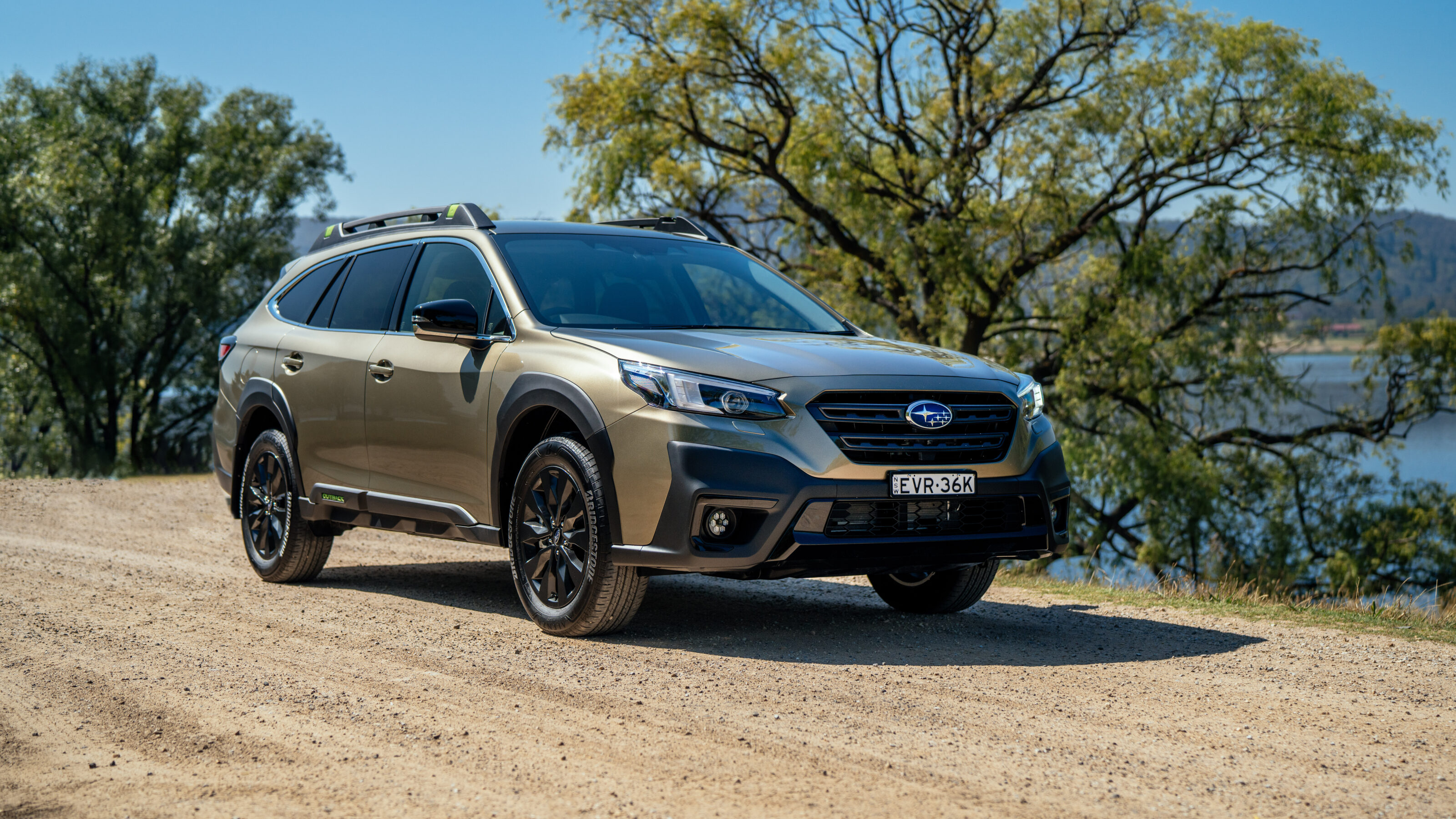
Within this segment there are also crossovers like the Volkswagen Passat Alltrack and Subaru Outback, both based on more conventional large wagons, but with extra ride height, all-wheel drive and rugged body plastics.
They warrant a mention for having ultra-huge boot areas and plenty of back seat space (and an attractive $47K starting price in the case of the Subaru), however neither are available with a three-row seat configuration.
More guides to help you choose the best car & tyres for your needs
- All tyre news & reviews
- Longest warranties & capped-price servicing period
- Buy new or used?
- Best cars for your teenager
- Must-have features for new drivers
- Active safety tech explained
- Australian road rules explained
- Does driving slower save fuel?
- Does my car need the pricier fuel?
- Help, I’ve used the wrong fuel!
- What is a hybrid car?
- How long do tyres last?
- What shoes should I wear to drive?
- What to do after buying a new car
- How much does LCT add to a car’s price?
- The ‘check engine’ light just came on…
- Is it illegal to drive too slowly in Oz?
- FWD v RWD v AWD – which is safer?
- How much can my large SUV tow?
We recommend
-
 Advice
Advice7-Seaters: Cars for families with four kids – or more!
We explore which vehicles you can get for larger families with four or more children
-
 Comparisons
ComparisonsBest Medium SUV 2023: Family Car Comparison
Thinking of buying a new mid-size SUV this year? We test eight of the best and most popular contenders to see where you should spend your money
-
 News
NewsDual-cab ute family features explained
Are utes good family vehicles? We take a look at some of their family-friendly features, as well as how easy it is to install a child's car seat



